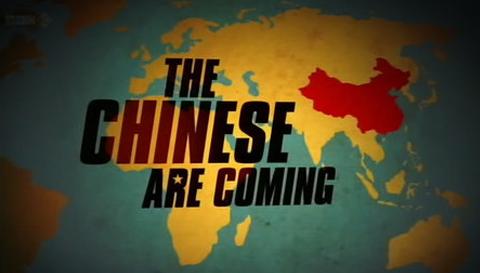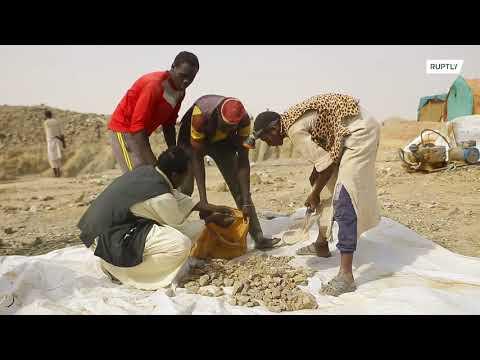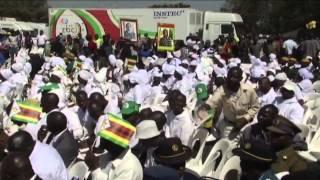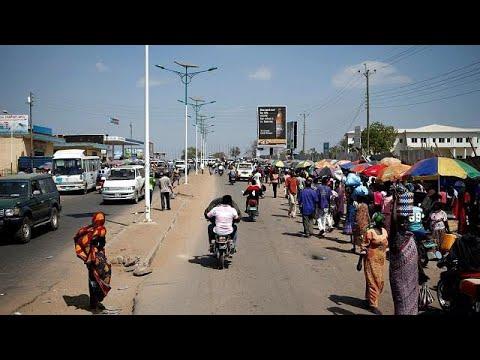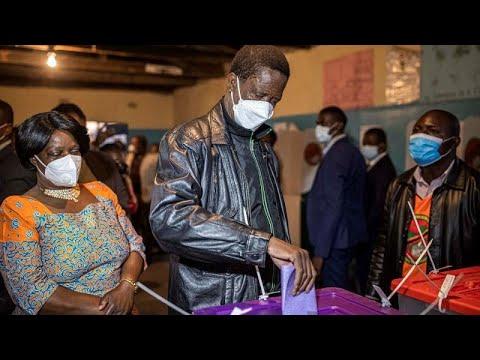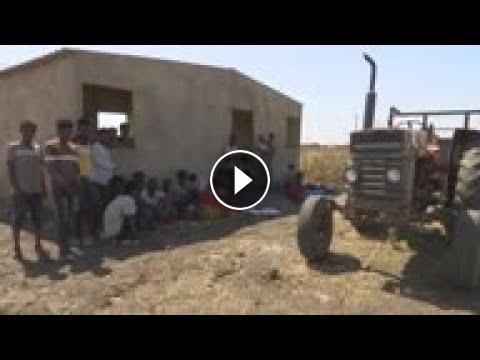(12 Dec 2020) The only thing the survivors can agree on is that hundreds of people were slaughtered in a single Ethiopian town.
Witnesses say security forces and their allies attacked civilians in Mai-Kadra with machetes and knives or strangled them with ropes. The stench of bodies lingered for days during the early chaos of the Ethiopian government’s offensive in the defiant Tigray region last month. Several mass graves have been reported.
What happened beginning Nov. 9 in the agricultural town near the Sudanese border has become the most visible atrocity in a war largely conducted in the shadows. But even here, much remains unclear, including who killed whom.
Witnesses in Mai-Kadra told the Ethiopian Human Rights Commission and Amnesty International that ethnic Tigrayan forces and allies attacked Amhara - one of Ethiopia’s largest ethnic groups but a minority in Tigray. In Sudan, where nearly 50,000 people have fled, one ethnic Amhara refugee gave The Associated Press a similar account.
But more than a dozen Tigrayan refugees told the AP it was the other way around: In strikingly similar stories, they said they and others were targeted by Ethiopian federal forces and allied Amhara regional troops.
It’s possible that civilians from both ethnicities were targeted in Mai-Kadra, Amnesty now says.
“They just hit anybody, they slaughter them with knives,” Tesfaalem Germay, an ethnic Tigrayan who fled to Sudan with his family, said of Ethiopian and Amhara forces. He said he saw hundreds of bodies, making a slicing gesture at his neck and head as he remembered the gashes.
But another refugee, Abebete Refe, told the AP that many ethnic Amhara like him who stayed behind were massacred by Tigrayan forces.
“Even the government doesn't think we're alive, they thought we all died,” he said.
The conflicting accounts are emblematic of a war about which little is truly known since Ethiopian forces entered Tigray on Nov. 4 and sealed off the region from the world, restricting access to journalists and aid workers alike. For weeks, food and other supplies have run alarmingly low. This week Ethiopia’s security forces shot at and briefly detained U.N. staffers making the first assessment of how to deliver aid, a senior Ethiopian official said.
Ethiopia's government and the Tigray one have filled the vacuum with propaganda. Each side has seized on the killings in Mai-Kadra to support its cause.
The conflict began after months of friction between the governments, which now regard each other as illegitimate. The Tigray leaders once dominated Ethiopia’s ruling coalition, but Prime Minister Abiy Ahmed sidelined them when when he came to power in 2018.
Long-held tensions over land in western Tigray, where Mai-Kadra is located, between Tigrayans and Amhara have added fuel to the fire.
Amnesty International said it confirmed that at least scores, and likely hundreds, of people were killed in Mai-Kadra, using geolocation to verify video and photographs of the bodies. It also remotely conducted “a limited set of interviews.”
But Mai-Kadra “is just the tip of the iceberg,” Amnesty researcher Fisseha Tekle told an event on Tuesday as fears grow about atrocities elsewhere in Tigray. “Other credible allegations are emerging ... not only in Mai-Kadra but also” in the nearby town of Humera, the town of Dansha and the Tigray capital, Mekele.
In Mai-Kadra, witnesses told the visiting Ethiopian rights commission they saw police, militia and members of a Tigray youth group attack Amhara.
Find out more about AP Archive: http://www.aparchive.com/HowWeWork
Twitter: https://twitter.com/AP_Archive
Facebook: https://www.facebook.com/APArchives
Google+: https://plus.google.com/b/102011028589719587178/+APArchive
Tumblr: https://aparchives.tumblr.com/
Instagram: https://www.instagram.com/APNews/
You can license this story through AP Archive: http://www.aparchive.com/metadata/youtube/7a7faeed39c14f09a3a156e2e308359d
Witnesses say security forces and their allies attacked civilians in Mai-Kadra with machetes and knives or strangled them with ropes. The stench of bodies lingered for days during the early chaos of the Ethiopian government’s offensive in the defiant Tigray region last month. Several mass graves have been reported.
What happened beginning Nov. 9 in the agricultural town near the Sudanese border has become the most visible atrocity in a war largely conducted in the shadows. But even here, much remains unclear, including who killed whom.
Witnesses in Mai-Kadra told the Ethiopian Human Rights Commission and Amnesty International that ethnic Tigrayan forces and allies attacked Amhara - one of Ethiopia’s largest ethnic groups but a minority in Tigray. In Sudan, where nearly 50,000 people have fled, one ethnic Amhara refugee gave The Associated Press a similar account.
But more than a dozen Tigrayan refugees told the AP it was the other way around: In strikingly similar stories, they said they and others were targeted by Ethiopian federal forces and allied Amhara regional troops.
It’s possible that civilians from both ethnicities were targeted in Mai-Kadra, Amnesty now says.
“They just hit anybody, they slaughter them with knives,” Tesfaalem Germay, an ethnic Tigrayan who fled to Sudan with his family, said of Ethiopian and Amhara forces. He said he saw hundreds of bodies, making a slicing gesture at his neck and head as he remembered the gashes.
But another refugee, Abebete Refe, told the AP that many ethnic Amhara like him who stayed behind were massacred by Tigrayan forces.
“Even the government doesn't think we're alive, they thought we all died,” he said.
The conflicting accounts are emblematic of a war about which little is truly known since Ethiopian forces entered Tigray on Nov. 4 and sealed off the region from the world, restricting access to journalists and aid workers alike. For weeks, food and other supplies have run alarmingly low. This week Ethiopia’s security forces shot at and briefly detained U.N. staffers making the first assessment of how to deliver aid, a senior Ethiopian official said.
Ethiopia's government and the Tigray one have filled the vacuum with propaganda. Each side has seized on the killings in Mai-Kadra to support its cause.
The conflict began after months of friction between the governments, which now regard each other as illegitimate. The Tigray leaders once dominated Ethiopia’s ruling coalition, but Prime Minister Abiy Ahmed sidelined them when when he came to power in 2018.
Long-held tensions over land in western Tigray, where Mai-Kadra is located, between Tigrayans and Amhara have added fuel to the fire.
Amnesty International said it confirmed that at least scores, and likely hundreds, of people were killed in Mai-Kadra, using geolocation to verify video and photographs of the bodies. It also remotely conducted “a limited set of interviews.”
But Mai-Kadra “is just the tip of the iceberg,” Amnesty researcher Fisseha Tekle told an event on Tuesday as fears grow about atrocities elsewhere in Tigray. “Other credible allegations are emerging ... not only in Mai-Kadra but also” in the nearby town of Humera, the town of Dansha and the Tigray capital, Mekele.
In Mai-Kadra, witnesses told the visiting Ethiopian rights commission they saw police, militia and members of a Tigray youth group attack Amhara.
Find out more about AP Archive: http://www.aparchive.com/HowWeWork
Twitter: https://twitter.com/AP_Archive
Facebook: https://www.facebook.com/APArchives
Google+: https://plus.google.com/b/102011028589719587178/+APArchive
Tumblr: https://aparchives.tumblr.com/
Instagram: https://www.instagram.com/APNews/
You can license this story through AP Archive: http://www.aparchive.com/metadata/youtube/7a7faeed39c14f09a3a156e2e308359d
Be the first to comment




